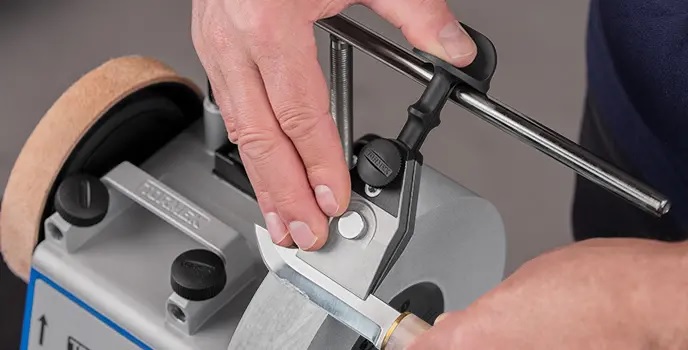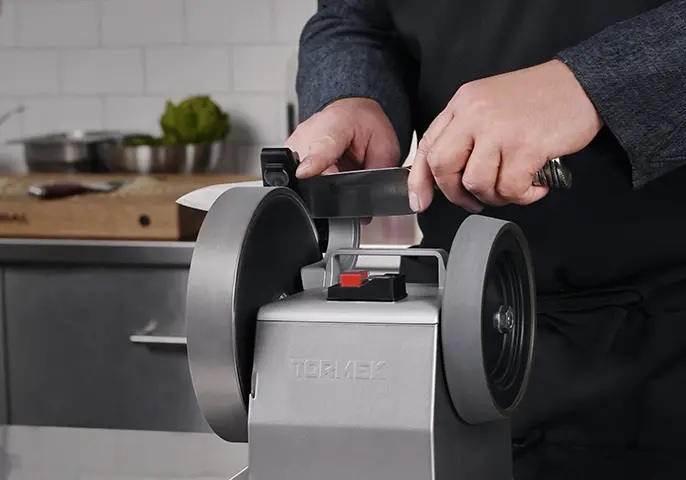✔ Competitive Pricing ✔ Quality Service ✔ Extensive Stock ✔ Experienced Staff
 Price
PriceTormek Guide to Sharpening Knives
Tormek Guide to Knife Sharpening
Learn how to sharpen knives like a pro - quick and easy!
QUICK, EASY, AND PRECISE SHARPENING
The Tormek knife jigs and angle guides enable you to restore your knife blade to its original and optimal edge angle - and sharper than when you got them! You'll get symmetrical, even, and clean bevels that meet up in a razor sharp apex. When you no longer get the sharpness you need by realigning the apex with a sharpening steel or honing rod, you can resharpen and reestablish the bevels to the intended angle for your knife with your Tormek machine.
A DURABLE EDGE
With the Tormek knife jigs and angle guides, you are in full control and get a consistent bevel and angle along the entire knife blade. If you resharpen the knife to its original edge angle, you avoid removing an unnecessary amount of steel, making the sharpening very efficient. It also minimize wear on your knives and you will love the feeling of always working with a really sharp knife with the ideal edge angle.

You don't always have to resharpen your knife. Often it's enough just touching up the edge with your Tormek honing wheel, a sharpening steel, a honing rod, or manual whetstones. Just keep in mind that the edge angle will unintentionally increase a bit each time. After a few touch ups you need to restore and resharpen both the entire bevels to the intended edge angle.
FROM SHARP TO DULL, TO SHARP AGAIN


5: Another honing sharpens the edge to a still larger angle.
6: The edge is now re-ground with Tormek to its original shape and edge angle.
KNIFE SHARPENING ANGLES
The ideal edge angle is depending on the type of knife and the area of use. A knife for cutting meat should have a larger edge angle than a knife for cutting vegetables. A small edge angle of 24° will cut easily but it will also be more sensitive to wear and damage. A larger edge angle of 40° will give a stronger and more durable edge. Below are some suggested edge angles for different types of knives.
Woodcarving Knives

Slicing, Filleting and Paring Knives

Knives for Butchers, Chefs and Kitchens

Hunting and Sporting Knives

The recommended edge angle of your knife is often written on the knife's packaging. If you don’t find it there you can often find it on the manufacturer’s website. Click here to find a list of angle recommendations from some “well-known” knife manufacturers.
See the full range of Tormek Sharpening Systems, Jigs and Grinding Wheels






 01726 828 388
01726 828 388






